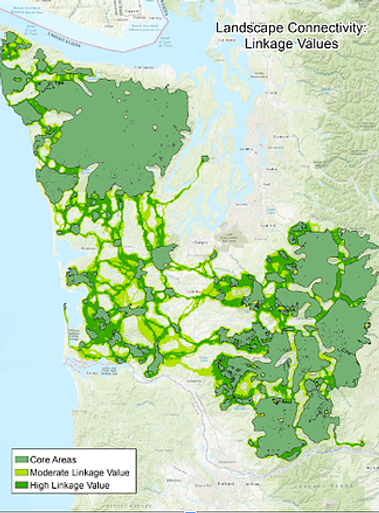
Our Vision
An enduring inclusive community-grounded partnership that successfully conserves the resilient landscapes that sustain us all.
Our Mission
To achieve a connected network of functioning, resilient ecosystems and working lands in the coastal Pacific Northwest that can adapt to climatic changes and other large-scale stressors, through the use of collaborative, science-based strategies that support the cultural, economic, and ecological values of the region.


Our Goals
To collaboratively create spatially enabled science-based tools that can advise local management plans and conservation priorities to support a resilient landscape.
Collaboratively develop strategies to design and manage resilient landscapes for people, ecosystems, biodiversity, and working lands.
To ensure long-term sustainability of the CCLC by nurturing and maintaining sustainable sources of funding, fostering participation in CCLC committees, and engaging diverse partners through the CCLC geographic region.
Our Principles
Collaborative
We seek to actively bring partners together to
co-produce a landscape-scale conservation blueprint.
Transparent
We provide our partners with rationale for our process, and
welcome input as we grow.
Inclusive
We are accessible to a network of representative regional partners.
Scalable
We engage partners from across multiple boundaries.
Science-Based
We use the best available knowledge to make pragmatic landscape conservation decisions.
Our Theory of Change
This diagram illustrates how our landscape conservation effort can engage in outreach and co-produced science to ultimately lead towards coordinated conservation at a landscape scale in the region.


Our Logo
Our logo is meant to convey the desired connectivity of our landscape and of the communities throughout the region. It was created by Ernie Rose of Rose Designs, located in Lincoln City, Oregon.
Our tagline, Designing for Resilience, represents our vision of co-creating a landscape capable of supporting resilient landscapes and communities.
